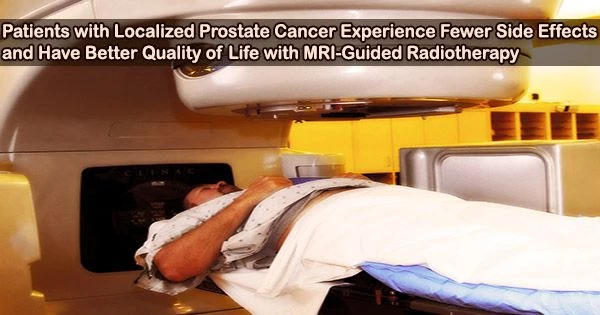According to recent research from UCLA Jonsson Comprehensive Cancer Center, for men receiving radiotherapy for localized prostate cancer, the precise targeting capabilities of MRI guidance led to fewer toxicities and greater quality of life, as assessed by patients and the medical professionals caring for them.
JAMA Oncology has published the findings of the first randomized phase III clinical trial that directly contrasted stereotactic body radiotherapy (SBRT) guided by MRI with SBRT guided by CT. They support preliminary findings made public at the San Francisco ASCO Genitourinary (GU) Cancers Symposium in 2022.
“MRI guidance offers several advantages over standard CT guidance, most notably the ability to dramatically reduce planning margins, providing more focused treatment with less injury to nearby normal tissues and organs,” said Amar Kishan, M.D., a radiation oncologist at the David Geffen School of Medicine at UCLA and the UCLA Jonsson Comprehensive Cancer Center and the study’s lead author.
“MRI technology is more costly than CT, both in terms of upfront equipment expenses and longer treatment times, which is one reason our study set out to determine if MRI-guided technology offers tangible benefits for patients.”
For prostate cancer, stereotactic body radiotherapy typically uses five or fewer carefully targeted doses of radiation. It is a well-known and typically well-tolerated kind of treatment, although it has side effects that can lead to sexual, gastrointestinal, and urinary problems.
In this trial, we demonstrated that the reduction in treatment volumes facilitated by MRI guidance leads to a significant reduction in moderate physician-scored toxicity and to a reduction in the proportion of patients noting significant decrements in patient-reported outcome metrics in the near term. Although additional studies will need to confirm these benefits over time, we’re hopeful that these results will lead to better outcomes for men with prostate cancer.
Dr. Amar Kishan
This clinical trial, Magnetic Resonance Imaging-Guided Stereotactic Body Radiotherapy for Prostate Cancer (MIRAGE), was led at UCLA and included 154 analyzable patients with prostate cancer who were randomized to either a CT-guidance arm (76 patients) or an MRI-guidance arm (78 patients).
The study’s inclusion of outcome measures determined by both patients and doctors was a novel feature. Over at least three months of follow-up, MRI-guided therapy was linked to fewer side effects and an improved quality of life from both viewpoints.
“In this trial, we demonstrated that the reduction in treatment volumes facilitated by MRI guidance leads to a significant reduction in moderate physician-scored toxicity and to a reduction in the proportion of patients noting significant decrements in patient-reported outcome metrics in the near term,” said Dr. Kishan. “Although additional studies will need to confirm these benefits over time, we’re hopeful that these results will lead to better outcomes for men with prostate cancer.”
The trial’s 2-millimeter margin with MRI guidance is less than it has ever been in a significant study before. Unlike CT, MRI technology can directly track prostate motion, and it provides better contrast for soft tissues, increasing the accuracy of alignment before radiation.
Authors: In addition to Dr. Kishan, authors include Ting Martin Ma, Michael Steinberg, James M. Lamb, Maria Casado, Holly Wilhalme, Daniel A. Low, Ke Sheng, Sahil Sharma, Nicholas G. Nickols, Jonathan Pham, Yingli Yang, Yu Gao, John Neylon, Vincent Basehart, and Minsong Cao, all of UCLA.
Funding:
This study was supported by grants from the U.S. Department of Defense (No. PC210066, Kishan), the American Society for Radiation Oncology (Kishan), the Prostate Cancer Foundation (Kishan), and the Jonsson Comprehensive Cancer Center (Kishan), the generous funding from the Bershad family, DeSilva family, and McCarrick family. The funding support had no role in the design, conduct, or analysis of the study.
















